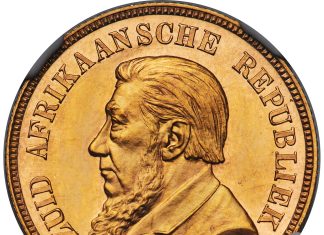Precious metals continued their declines on Wednesday as the U.S. dollar gained and crude-oil dropped by more than 5 percent — its lowest level since January 2007. New York silver, gold and platinum futures fell 3.3 percent, 2.0 percent and 0.2 percent respectively.
 December crude-oil faired worse than Tuesday, sinking $3.17, or 5.3 percent, to close to $56.16 a barrel. The contract reached as low as $55.83.
December crude-oil faired worse than Tuesday, sinking $3.17, or 5.3 percent, to close to $56.16 a barrel. The contract reached as low as $55.83.
December silver added to Tuesday’s 41.5 cents loss, falling another 32.5 cents to end at $9.48 an ounce.
January platinum fell marginally, slipping $1.50 to settle at $825.10 an ounce.
Gold for December lost $14.50 to close to $718.30 an ounce. Its intraday low was $711.50, a level not seen since October 27.
"The big deflation is on," said Ron Goodis, a futures-trading director at Equidex Brokerage Group in Closter, New Jersey. "It’s risk aversion. The trend is still in place: Long the dollar and short all commodities."
"People are attracted to cash," said Frank Lesh, a trader at FuturePath Trading LLC in Chicago. "People do not want risk. They don’t want commodities. I can’t say the bottom’s in for gold yet."
The U.S. Energy Information Administration (EIA) downgraded its outlook on energy demand and prices on Wednesday, citing the global economic downturn. It forecasts an average crude price of $101.45 a barrel for this year and $63.50 for 2009.
Gold, considered a hedge during times of high inflation and economic uncertainty, tends to follow oil and move opposite to the U.S. dollar. A rising greenback makes dollar-denominated commodities, like bullion, more expensive for holders of other world currencies. When prices are falling and economic activities are shrinking, gold prices tend to move lower.
Check out CoinNews market resources at Live Silver, Gold & Platinum Spots, the Silver Coin Calculator, U.S. Mint Collector Bullion Coin Prices, and the Inflation Calculator.










